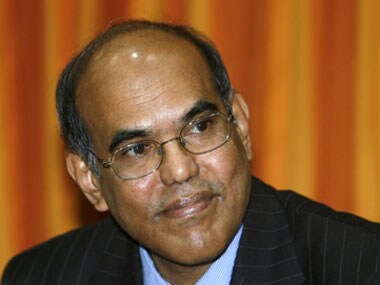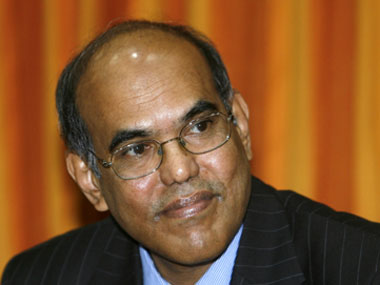The message coming through loud and clear from the Reserve Bank of India’s (RBI’s) monetary policy review on Friday is simple: inflation is enemy No 1. We may not have seen the last of the rate hikes.
By raising the repo rate - the rate at which the RBI lends overnight money to banks - for the 12th time in succession to take it to 8.25 percent (up 0.25 percent), Governor Duvvuri Subbarao has effectively turned a deaf year to the finance ministry’s entreaties to opt for a pause by thinking “out-of-the-box.”
A few days ago, the finance ministry’s Chief Economic Advisor Kaushik Basu said: “We live in a very unusual world where some countries have very, very low interest rates whereas other countries have high interest rates. So we must think outside the box in terms of monetary policy and that is what I would stress to the Reserve Bank of India,” Basu said.
Subbarao has just told him ’no’. Banks will have to take the cue and possibly raise interest rates again, though they may be in no rush to do so quickly.
[caption id=“attachment_85536” align=“alignleft” width=“380” caption=“The message coming through loud and clear from the Reserve Bank of India’s monetary policy review on Friday is simple: inflation is enemy No 1. Reuters”]
 [/caption]
[/caption]
The Governor’s not-so-coded message to North Block is four-fold:
One, we don’t think inflation has been tamed, and it could even get worse.
This is his actual statement: “Inflation remains high, generalised and much above the comfort zone of the Reserve Bank…. Moreover, there is still an element of suppressed inflation. Though global oil prices have moderated, the pass-through to domestic prices remains incomplete. Also, current administered electricity prices are yet to reflect (in an) increase in input prices, even as many states have initiated increases. Food inflation is at near-double digit levels, despite normal monsoons, underlining the fact that it is being driven by structural demand-supply imbalances and cannot be dismissed as a temporary phenomenon. The inflation momentum, reflected in the de-seasonalised sequential monthly data, persists.”
Two, fiscal policy is working against monetary policy by being too loose.
Subbarao’s statement says this: “The central government’s fiscal imbalances widened during April-July of 2011 reflecting, primarily, the impact of a decline in revenue receipts coupled with pressures from non-plan revenue expenditures on account of higher petroleum and fertiliser subsidies. The fiscal deficit at 55.4 percent of the budget estimates in the first four months of the current fiscal was significantly higher than that of 42.5 percent during the corresponding period last year (when adjusted for the more than budgeted spectrum proceeds).”
Three, our policy is beginning to work. We will not damage our own credibility by changing course.
Subbarao said: “The monetary tightening effected so far by the Reserve Bank has helped in containing inflation and anchoring inflationary expectations…As monetary policy operates with a lag, the cumulative impact of policy actions should now be increasingly felt in further moderation in demand and reversal of the inflation trajectory towards the later part of 2011-12. As such, a premature change in the policy stance could harden inflationary expectations, thereby diluting the impact of past policy actions. It is, therefore, imperative to persist with the current anti-inflationary stance.”
Four, we could do more of the same if inflation does not moderate, never mind if growth comes down.
The Governor said: “Going forward, the stance will be influenced by signs of downward movement in the inflation trajectory, to which the moderation in demand is expected to contribute, and the implications of global developments.”
In short, if inflation does not come down, the rate hike policy stays.
)